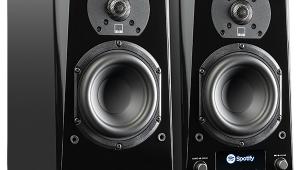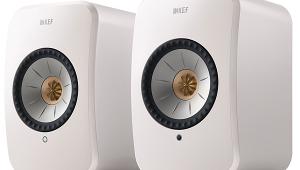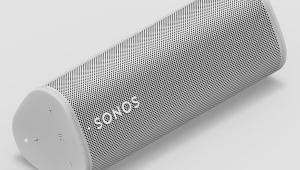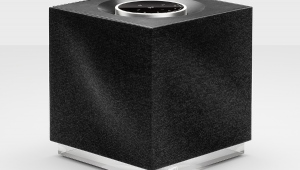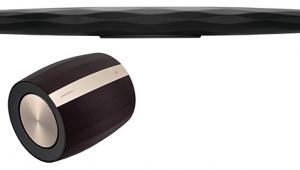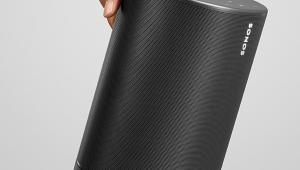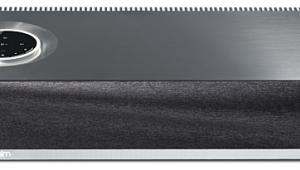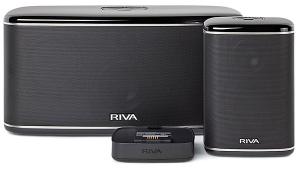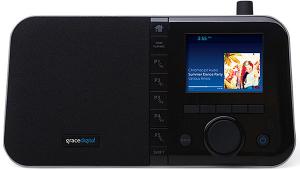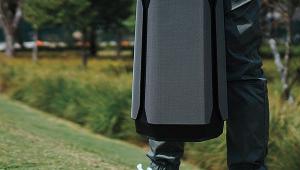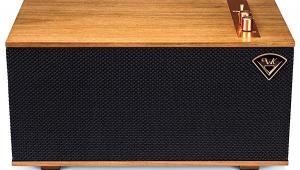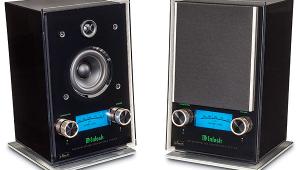Audioengine HD6 Wireless Speaker Review
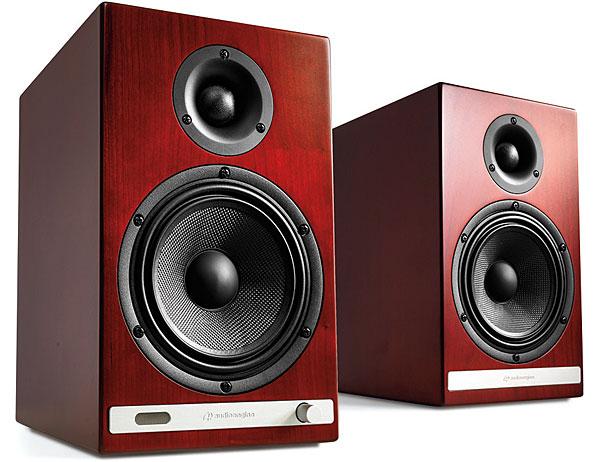
AT A GLANCE
Plus
Easy, comfortable sound
Bluetooth with aptX, AAC
Simple to set up and use
Superb finish
Minus
No USB or Wi-Fi
A bit too large for desktop use
THE VERDICT
The easy-to-live-with HD6 looks great and can deliver high-quality, true stereo sound with a minimum of fuss and clutter.
In the decade since they launched their first powered speaker, Audioengine has become embedded in my mind as the no-brainer recommendation whenever friends ask about getting better sound on their desktop. Dozens of both audiophile and non-audiophile friends have bought A5 and A2 amplified speakers at my suggestion—and so far, nobody has been disappointed. They’re affordable, easy to buy, and easy to set up, and they look great.
With the HD6, Audioengine has stepped up their game in a way that moves them into a new category. At $749/pair, the HD6 isn’t the kind of impulse purchase I can just casually toss out there; prospective buyers will want to determine for themselves if it fits their needs. In addition, the HD6 is large enough that a pair won’t really fit comfortably on most desktops, unless you have some kind of oversized Donald Trump desk. These are speakers for filling a room with music, and that means they’re going to be competing with real hi-fi systems, not just the puny little plastic boxes that sit on many desktops. I like to think of the HD6 as being a bit like that single-box Bluetooth speaker your neighbor calls his hi-fi, only this one sounds great and actually provides true stereo separation.
Because the HD6s will be sitting out in your room for all to see, Audioengine offers the speakers in a choice of sumptuous real wood veneers. The review samples came in a more traditional-looking walnut, but you may choose a lovely deep-red cherry or a black painted finish if your décor is more modern. All three versions come with a removable fabric grille held in place by hidden magnets, so there are no ugly little grille plug holes left on the front panel if you want to leave the drivers exposed. Below each grille is an attractive brushed-metal strip, which on the left speaker incorporates the volume control and power indicator LED. The bottom surface of each speaker has a rubber pad that won’t scratch your furniture, and there’s a threaded screw insert in the middle of the base to secure the speaker if you happen to have clumsy cats or curious rugrats running around your place.

The volume knob is the only way to tell left from right when you’re looking at the speakers from the front, but if you spin the HD6s around, you’ll discover that the left speaker contains all of the business parts. The right HD6 is simply a passive speaker with a pair of binding posts that let you connect it to its amplifier housed in the left speaker. A 12-foot length of speaker cable nicely terminated with banana plugs is provided to do the job.
It’s a mistake to think of the HD6s as just a pair of speakers, because in practice they replace most of the components of a complete stereo system. Packed inside are a 50-watt Class A/B amp for each channel, a preamp (governed by a small, attractive, aluminum-skinned remote control), and a high-quality digital-to-analog converter, as well as both wired and wireless connections. All you need to do is add a source, and you’ll be ready to go. There are two analog and two digital inputs, and all four stay connected simultaneously and are mixed together. You simply switch on the source you want to use and switch off those you don’t. For analog sources, the HD6 has a 3.5mm stereo minijack and a pair of RCA inputs. Digital connections are made directly via the Toslink optical input, or wirelessly using Bluetooth. Finally, there’s a pair of variable level analog RCA outputs that can be used to connect to a subwoofer.
You may have noticed that there’s no USB input, which reinforces my belief that Audioengine really doesn’t expect people to put these speakers on their desktop. Nor is there Wi-Fi, as Audioengine wants the wireless hookup to be as painless and intuitive as possible. The Bluetooth implementation includes both the aptX and AAC codecs in addition to the standard SBC, so good-quality streaming really shouldn’t be a problem. Of course, if you want to be an audiophile, you can always go with a hard-wired connection.
 Setup
Setup
While the HD6s may be a bit large for desktop use, they’re still on the smallish side as whole-room speakers go. To give them a little bass support, I used them on a pair of 24-inch stands with the backs of the speakers about 9 inches from my front wall and positioned about 6 feet apart. The wide slotshaped port at the top of each back panel needs a little room to breathe, so it’s not a good idea to put the speakers hard against the wall or to pack them too tightly into a bookcase. Connecting them to various sources couldn’t be simpler, including pairing them wirelessly to an iPhone or iPad. If only all audio system hookups were this simple!
Listening
Audioengine has negotiated a deal with the CD-quality Tidal streaming service that offers you a free 90-day trial subscription when you buy the HD6. With this in mind, I used my own Tidal demo playlist for most of my listening. The whole process was so easy, I’m beginning to understand why non-audiophiles tend to think we audiophiles are nuts for constantly jumping up from our chair to change the music source.
Any concerns I may have had about the HD6’s ability to fill a room were immediately wiped out when I played “Sponji Reggae” from Black Uhuru’s Red. With this track, anchored by the legendary rhythm section of Sly Dunbar and Robbie Shakespeare, the speakers projected a huge, spacious soundstage into my room, with a sense of width and depth that no single-box speaker can muster. The very top octaves were just a bit soft sounding—for example, the glockenspiel didn’t quite have its usual crystalline clarity—but I soon decided that this was a deliberate voicing decision made by Audioengine. Many owners are likely to use the HD6 with a wide variety of source material, including lower-resolution MP3s, so it can be argued that it’s better to lean toward a slightly warmer presentation than an overly detailed, upfront, in-your-face kind of sound.

One of my favorite bass torture tracks is “Words of Wonder” from Keith Richards’ Main Offender. Speakers with one-note, plodding bass are ruthlessly revealed, but the HD6 totally avoided that problem, delivering bass that was both tuneful and punchy. The little 5.5-inch woofers couldn’t exactly get the windows to rattle, but I’ll always go for subtlety over bass that’s hyped up to sound bigger than it really is. Bass freaks can always add a subwoofer to the HD6s, using the line-level outputs.
Overall, the speakers had a very comfortable and listenable sound that made them easy to live with over the long haul. Their ability to fill a room with a big, bold sound belies their compact dimensions, and they can deliver the goods with a wide variety of sources.
Conclusions
All-in-one solutions like the HD6 aren’t designed to replace an audiophile’s component stereo rig, and many audiophiles would find the system’s lack of tweakability frustrating. But it’s precisely this simplicity that makes an integrated approach like the HD6 so appealing to everyone else. The big advantage here is that, along with that simplicity, you get the type of true stereo performance you can only get from a fine-sounding pair of separate speakers.
- Log in or register to post comments

